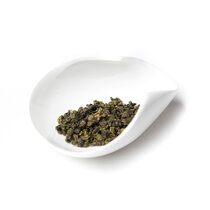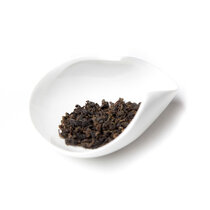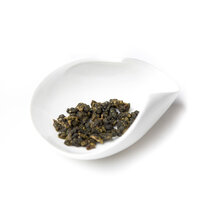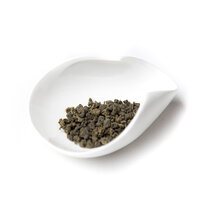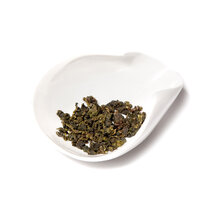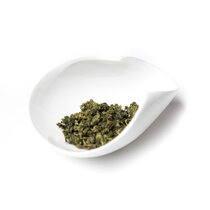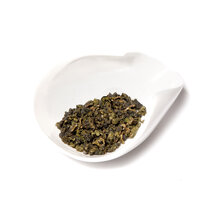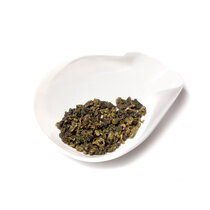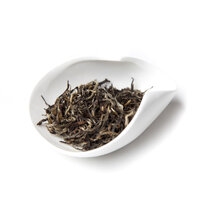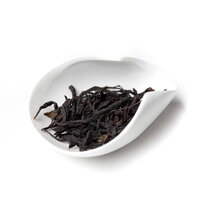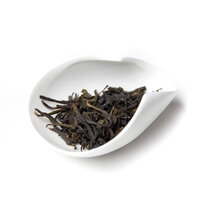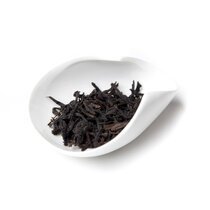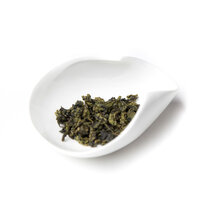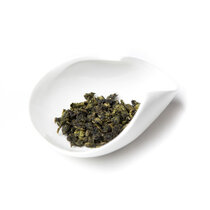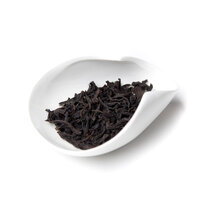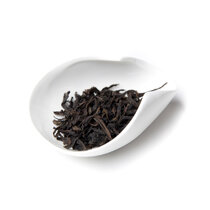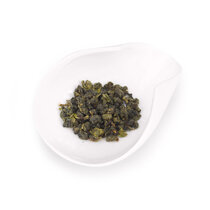Oolong originated in Fujian province in southeast China, from where it expanded to other parts of China and Taiwan. Its processing requires true tea craftsmanship, which is reflected in the quality and variety of aromas and flavours of the different types of oolongs.
In oolong production, the tea leaves are gently turned and shaken after withering in order to disturb their edges and allow the process of oxidation to take place. We recognise different degrees of oxidation in oolongs, which is how the different types of oolongs vary from one another.
The more delicately oxidised oolongs have greener leaves, while the more oxidised ones are darker, reddish to red brown. Oxidation affects the resulting aroma and flavour of the tea - with oolongs it can be slightly grassy, flowery or fruity.
When oxidation reaches the desired degree, it is stopped by heat - steaming or roasting. The shape of the leaves also varies - some are rolled into balls, others are loose, and different methods of roasting and roasting them in baskets or pans are used during processing to achieve the desired aroma and flavour. The tea master oversees the whole process to ensure that the leaves do not burn or get damaged.
As a result, we recognise the delicate, ‘greener’ oolongs from Fujian, the lightly fermented Taiwanese oolongs, the dark reef oolongs from Wu Yi Mountain or the Chinese phoenix oolongs. Certain oolongs are helped by the oxidation of small green cicadas...
Oolongs contain health benefits such as catechins, polyphenols, but also vitamins C and E and minerals. Thanks to their caffeine content, they give you a pleasant boost. They support metabolism and help in the prevention of dental cavities and civilisation diseases.
Join us in the world of the most interesting teas and find your favourite oolong.
